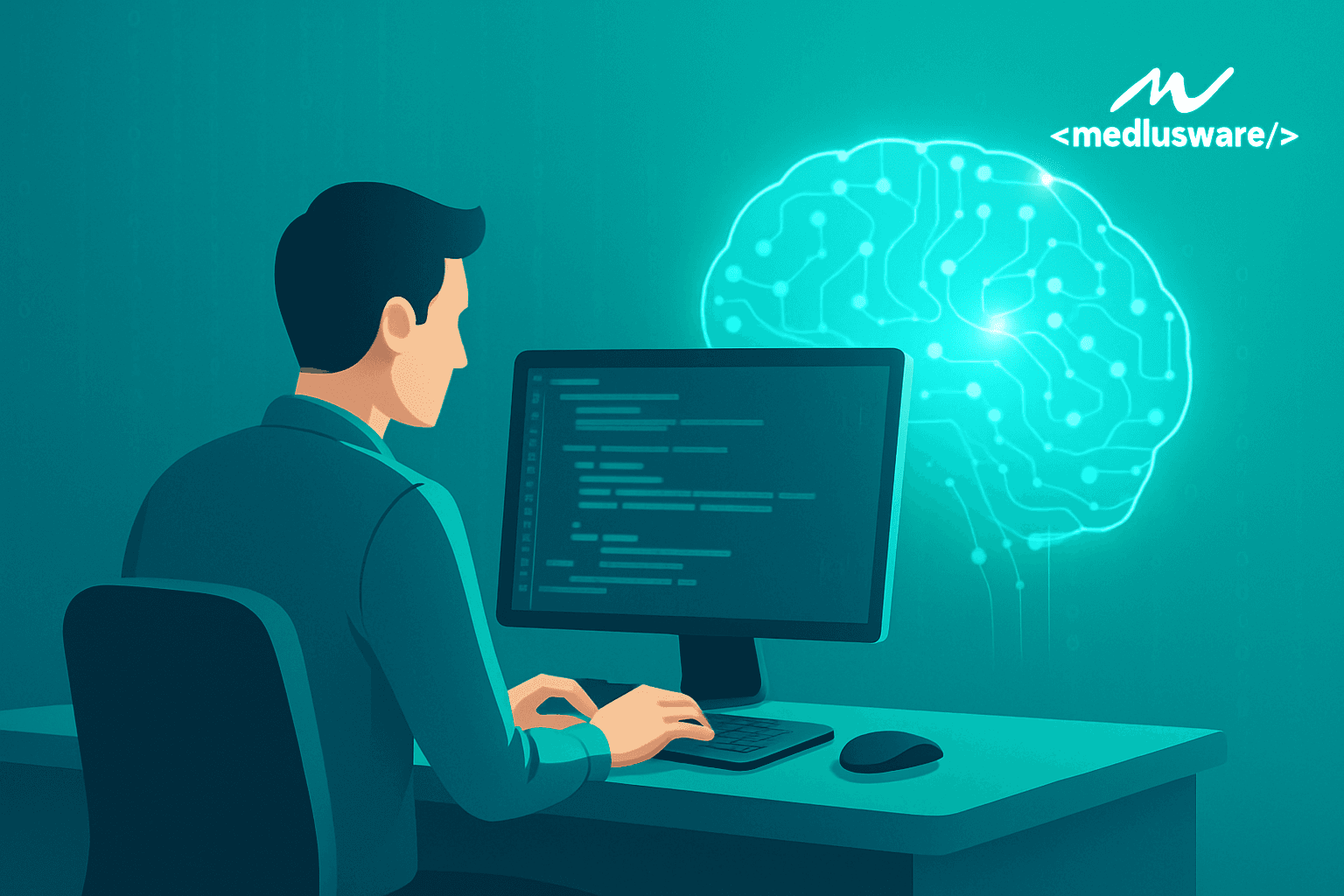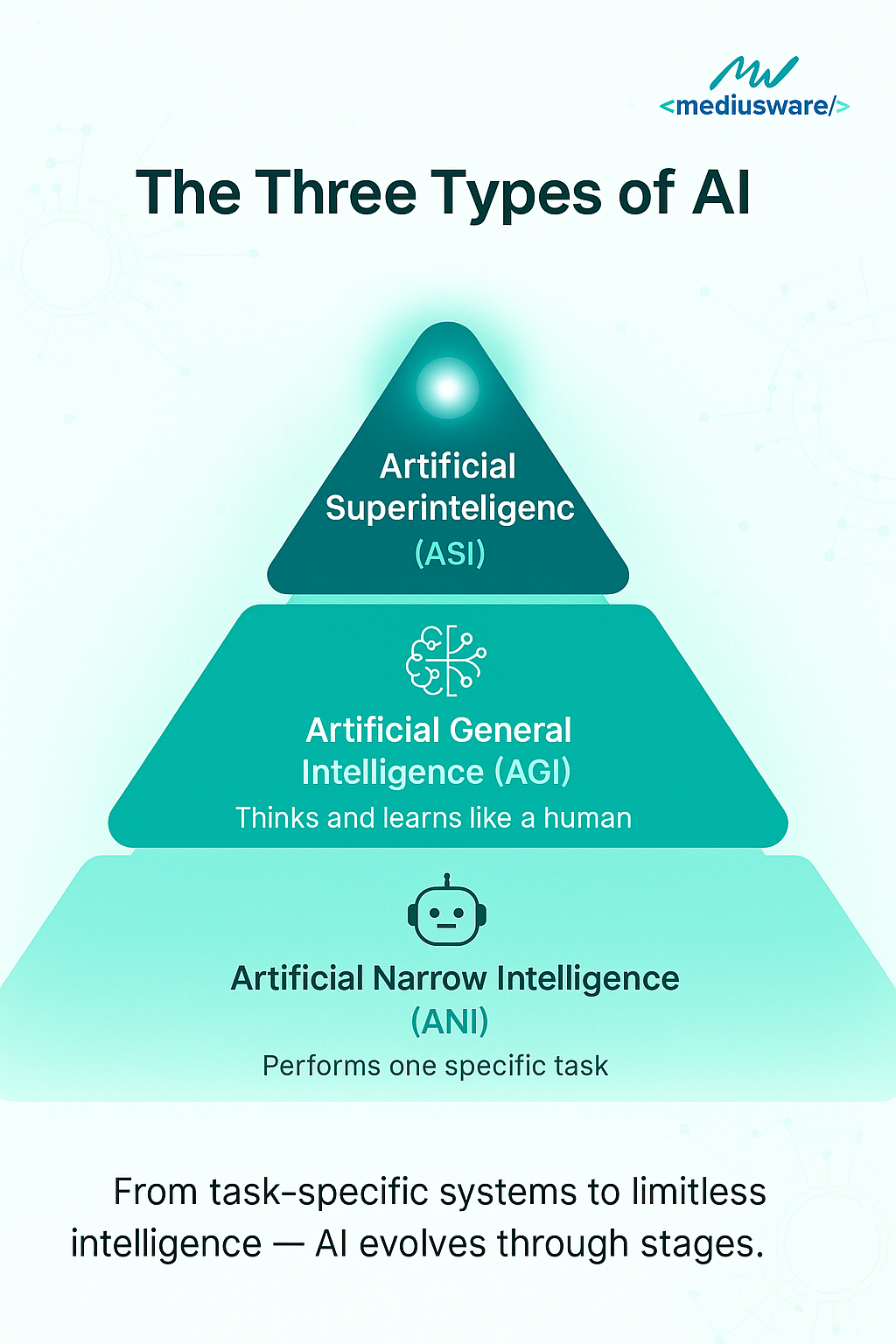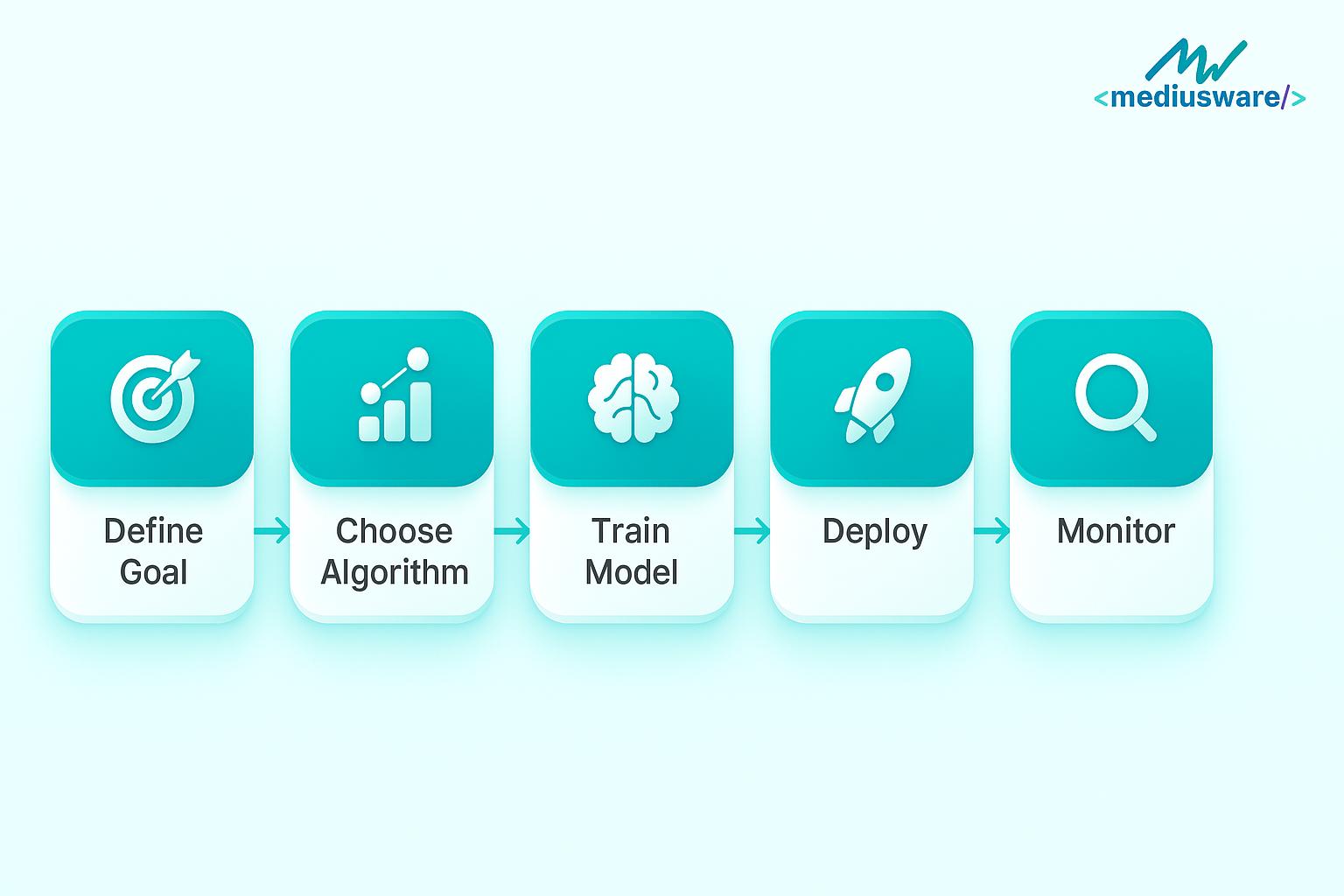- AI isn’t magic. It’s clarity, data, and design coming together.
- Learn how to build intelligent systems that work and keep learning.
How to Build a Real World AI System That Actually Works

It often begins with an idea that sounds simple.
What if I could teach my system to make decisions on its own?
You open your laptop, start a new project, and suddenly reality hits.
Building an AI system isn’t like writing another app. It doesn’t just follow instructions. It learns, adapts, and sometimes surprises you.
For many developers, the first time they try to create artificial intelligence, it feels uncertain. You gather messy data, train models that don’t behave, and wonder if you’re doing it right. But here’s the truth: learning how to make AI that works in the real world isn’t about perfection. It’s about process.
Every successful system, from chatbots to image recognition tools, follows the same rhythm: define a goal, prepare clean data, train, test, and refine until it delivers real value.
This guide breaks that process down, step by step, so you can learn how to create AI that truly performs, not just on paper, but in production.
What an AI System Really Is
Artificial Intelligence is a framework that lets machines think, learn, and adapt. It’s not magic. It’s logic and data coming together to automate decision-making.
When you create artificial intelligence, you’re essentially teaching a computer how to recognize patterns, make predictions, and act on insights.
Think of it as layers working together:
- Machine Learning helps it learn from data
- Deep Learning helps it spot complex relationships
- Natural Language Processing helps it understand text and speech
- Generative AI takes it further, helping it create new content
The key is to make each layer connect seamlessly so your system doesn’t just function, it evolves.
The Three Types of AI
Before you make an AI system, it helps to know what kind you’re actually building.
Artificial Narrow Intelligence (ANI)
The most common type. It performs one task well, like detecting spam, recommending a product, or understanding voice commands. Most AI today belongs here.
Artificial General Intelligence (AGI)
This represents a system that can reason and think like a human, switch tasks, and learn from experience. It’s still a goal, not a reality.
Artificial Superintelligence (ASI)
A theoretical stage where AI surpasses human intelligence entirely. It’s a concept under research and ethical debate, not something we can build today.
For now, focus on Narrow AI; it’s practical, profitable, and already changing how businesses operate.

Best Programming Languages for AI
The language you choose shapes how you’ll make your AI.
Python
The most popular choices with libraries like TensorFlow, PyTorch, and Scikit-learn, which make building AI models intuitive and efficient.
Julia
Known for speed and performance, ideal for large-scale AI simulations or high-computing workloads.
R
Perfect for statistical modeling and academic projects.
Others Worth Knowing
Languages such as Java, C++, and Go are solid for enterprise systems where scalability and performance are key
Choosing the Right AI Platform
Before you start to create artificial intelligence, you’ll need a development platform that matches your skills and data needs.
If you’re technical:
- AWS AI Services offer scalability and customization
- Google Cloud AI integrates with advanced analytics
- Azure Machine Learning works well for collaborative enterprise projects
If you’re not a developer:
- Google AutoML, IBM Watson, or DataRobot make it easy to make an AI system with minimal coding.
Your choice should depend on your goals, not the latest trend.
How to Create an AI System Step by Step
This is where theory turns into practice. Let’s see how to create AI that actually works.
1. Define a Clear Goal
Start with clarity. What problem are you solving, and why does it matter?
Ask yourself:
- What outcome am I expecting?
- How will AI improve it?
- Is the goal measurable?
For example, an online retailer might want to make an AI system that predicts customer churn. That’s specific and valuable.
2. Gather and Clean Your Data
Data is the fuel that powers your AI.
When you create artificial intelligence, spend most of your time preparing your data.
Collect it from reliable sources, clean it, and label it accurately.
Structured data builds strong models. Messy data builds confusion.
3. Choose the Right Algorithm
The algorithm is the brain of your AI.
Different algorithms serve different purposes:
- Neural Networks for Pattern Recognition
- Decision Trees for structured predictions
- Clustering for segmentation
- Reinforcement Learning for dynamic learning
Start simple. You can always evolve your model later.
4. Train the Model
Now the real learning begins.
Split your dataset into training data to teach your model, and testing data to check how smart it’s become.
Training is repetitive but essential. You’ll tune parameters, test, fail, and retry until the system performs consistently.
That’s the moment your code starts thinking.
5. Deploy the System
Once trained, connect your AI to the real world.
This is where theory becomes product.
Deploy your model into an app, workflow, or analytics dashboard. Make sure it integrates smoothly and scales easily.
6. Monitor and Improve
AI never stops learning.
Track its accuracy, performance, and bias over time.
Update your datasets, retrain when needed, and refine based on new behavior.
Monitoring ensures your AI doesn’t just work once; it keeps improving with every new input.

Common Mistakes to Avoid
- Building without a clear purpose
- Using poor-quality data
- Overcomplicating your first model
- Skipping post-launch monitoring
Avoid these, and your AI system will be far more sustainable and effective.
Why Some AI Projects Fail
Many teams try to make AI fast, not smart.
They underestimate the importance of clean data or realistic expectations.
Success in AI isn’t about size or speed. It’s about precision, patience, and iteration.
Start small, validate, then scale.
Final Thoughts
Learning how to create artificial intelligence is not about coding perfection. It’s about solving problems better and faster.
When you focus on understanding the problem, preparing your data, and refining your model, AI becomes more than a buzzword; it becomes a business advantage.
If you’re ready to create an AI system for your business, Mediusware’s AI experts can help you plan, train, and deploy solutions that work reliably in the real world.

Get the best of our content straight to your inbox!
By submitting, you agree to our privacy policy.


